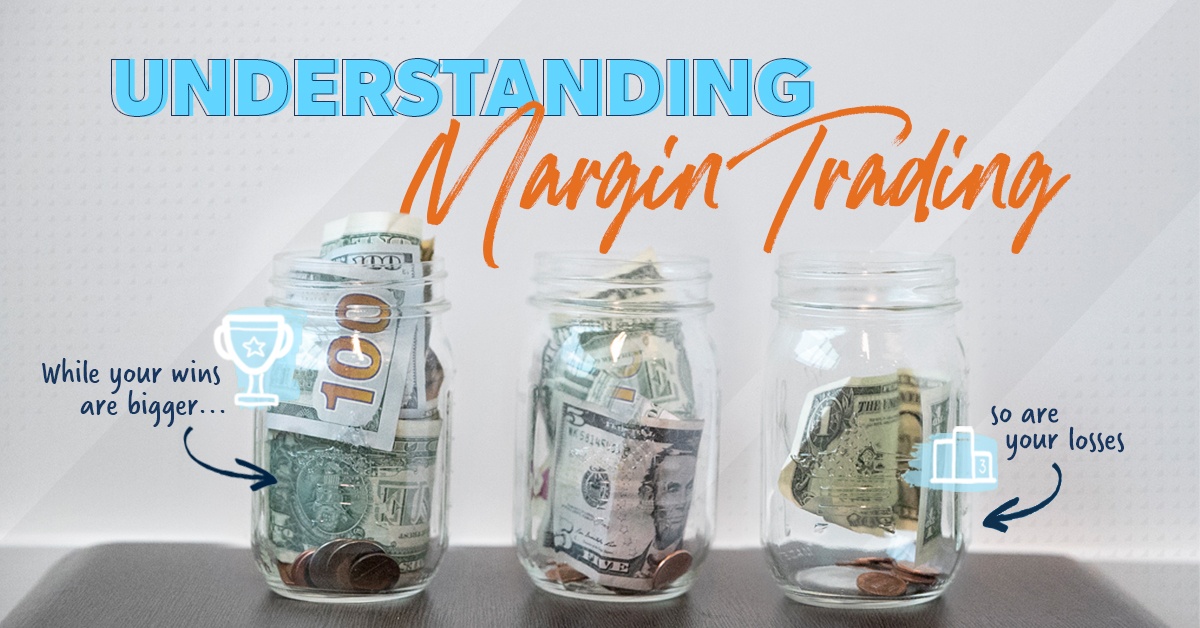What Is Margin Trading and How Does It Work?
8 Min Read | Sep 6, 2023

Unfortunately, there are a lot of financial “experts” out there who want you to use debt to get rich. They’ll use smoke and mirrors and throw around fancy terms like “leverage” and “margin” to make this sound like a sophisticated investing strategy that will put you on the fast track to a high net worth. But the reality is this: Taking on debt in order to invest is riskier than climbing a mountain without a rope.
Let’s break down what margin trading is, how it works and why it’s one of the most dangerous ways to invest your hard-earned cash.
What Is Margin Trading?
Margin trading is when you buy and sell stocks or other types of investments with borrowed money. That means you are going into debt to invest . . . let that sink in for a minute.
Market chaos, inflation, your future—work with a pro to navigate this stuff.
So whenever you see “margin,” we want you to immediately think borrowed money. And since you’re taking out a loan to buy stocks, you’re giving up some control and ownership of your investments to the brokerage firm that gives you a margin loan. So if things don’t turn out well, the brokerage firm could sell all of your shares without needing to consult with you, kind of like a home foreclosure (more on that later).
Margin trading is when you buy and sell stocks or other types of investments with borrowed money. That means you are going into debt to invest.
Margin trading is built on this thing called leverage, which is the idea that you can use borrowed money to buy more stocks and potentially make more money on your investment. But leverage is a double-edged sword that also amplifies your risk. While you might make more money if you bet on the right horse, you also might lose more if you pick a loser stock.
Most of the time, someone who signs a margin agreement can borrow up to 50% of the purchase price of a marginable investment. Translation? Under margin trading rules, you could buy twice as much stock than you can actually afford. So if you want to use margin to buy $5,000 worth of stock, you have to put down at least $2,500 if you want to borrow the rest to make the purchase.
And since these are loans, you’ll have to pay interest on them. Generally, margin loans come with interest rates averaging between 6–8%, but sometimes those rates could go as high as 10% depending on the size of your account balance.
How Does Margin Trading Work?
The best way to understand the ins and outs of margin trading is to see how it might play out in the real world.
Let’s say Jerry has $5,000 cash on hand and there’s a stock he wants to buy that is worth $100 per share, so he goes ahead and buys 50 shares of that stock. One year later, the price of the stock rises to $120 per share and Jerry decides to sell all his shares for $6,000. That means Jerry made a $1,000 profit on his initial investment. Generally, that’s how stock trading works.
But let’s back up to the beginning of the story. Under margin rules, Jerry could put down $5,000 and then borrow another $5,000 to buy 100 shares of that stock he was looking at. If Jerry executed that margin trade and then sold all of his shares a year later for that same $120-per-share price, he would make $12,000 on that margin trade. After Jerry pays back the $5,000 he borrowed (plus interest), he’d end up with a little under $2,000 in profit.
Sounds great, right? Not so fast! Remember, while your wins are bigger, so are your losses—that’s the dark side of margin trading.
What if the stock price dropped to $80 per share after one year and Jerry decided to sell and cut his losses? If poor Jerry sold all 100 of his shares for $8,000, he’d still have to pay back the $5,000 he borrowed (again, plus interest). That leaves Jerry with less than $3,000 of his initial investment—that means he just took a $2,000 hit. Yikes. If he had just stuck with buying 50 shares with his $5,000, he would have only lost $1,000.
What Is a Margin Call?
When you take out a margin loan from a brokerage firm to buy stocks or other types of investments, you have to meet a minimum equity requirement—which means you must have a certain amount of cash in your account at all times. When you see “equity,” just think cash.
If your stock declines below that level, then it might trigger a margin call. A margin call is when the brokerage firm requires you to deposit more cash into the account to meet the minimum equity requirement. If you fail to do that, then they can sell all of your shares without your consent, leaving you with no more shares and still owing them money for the loan. It’s the worst-case scenario of a margin loan!
Let’s use Jerry as an example again. Remember, he bought stock for $10,000 and purchased half of that stock with borrowed money. So that means Jerry had 50% equity at the start of his margin trade. You can calculate the amount of equity in your account by using the following equation:

Most brokerage firms have a minimum equity requirement between 30–35%. So if the brokerage firm Jerry borrowed from has a 30% minimum equity requirement and the total value of Jerry’s stock falls to $6,000, Jerry’s going to find himself in big trouble.
That’s because when you subtract the amount of the margin loan ($5,000) from the current value of Jerry’s stock ($6,000), Jerry is left with $1,000 in equity in the account, or 17% equity—which is well below the brokerage firm’s minimum requirement.
Because his account is now below the minimum equity requirement, Jerry receives a margin call for $800 from his brokerage firm (30% of $6,000 is $1,800). That means he needs to put an additional $800 on top of the $1,000 in equity he has in the account to meet the firm’s minimum requirement.
And what happens if Jerry fails to meet the margin call? Then it’s possible that the firm can sell all his shares without consulting him first . . . and Jerry will still have to pay back the firm for the money he borrowed. Not a good time to be Jerry right about now!
Why Margin Trading Is a Terrible Idea
We're not going to try to put lipstick on a pig here—margin trading is a bad idea. A really bad idea. Debt is already dumb all by itself—but trying to invest with debt? That’s a whole other level of stupid.
One of the biggest myths out there is that millionaires built their wealth by taking big risks with their money. Wrong! While it’s true that practically all investments come with some risk, millionaires keep their risk and reward ratios in check by sticking with proven, consistent investments with long-term track records.
Millionaires keep their risk and reward ratios in check by sticking with proven, consistent investments with long-term track records.
Most millionaires made their way to millionaire status thanks to their boring old 401(k)s and IRAs! The wealthy people that we know don’t rely on debt—oh, excuse us, “leverage”—to get rich.
Here’s the deal, whenever you get yourself into debt to invest, you’re leaving yourself vulnerable to financial catastrophe and it’s just not worth it. With margin trading, a few wrong moves can end up wiping out your entire portfolio. And not only do you risk losing your entire investment if your stocks take a nosedive, but you would also still need to pay back the margin loan you took out—plus interest. In some cases, you could actually lose more money than you invested thanks to interest payments and commissions you have to pay to make your trades.
Millionaires realize that building wealth takes time—there are no shortcuts. They don’t take unnecessary risks with their money, and neither should you.
Work With an Investment Pro
If you’re ready to build wealth and save for retirement, you need to have someone there to walk you through your investing options. Someone who can help you steer clear of potential investing pitfalls and stay on track to reach your goals.
Our SmartVestor program can connect you with qualified investment professionals in your area ready to help you plan for your future and invest with confidence. Believe us when we tell you that investing is too important to figure out on your own!
Make an Investment Plan With a Pro
SmartVestor shows you up to five investing professionals in your area for free. No commitments, no hidden fees.
This article provides general guidelines about investing topics. Your situation may be unique. To discuss a plan for your situation, connect with a SmartVestor Pro. Ramsey Solutions is a paid, non-client promoter of participating Pros.



